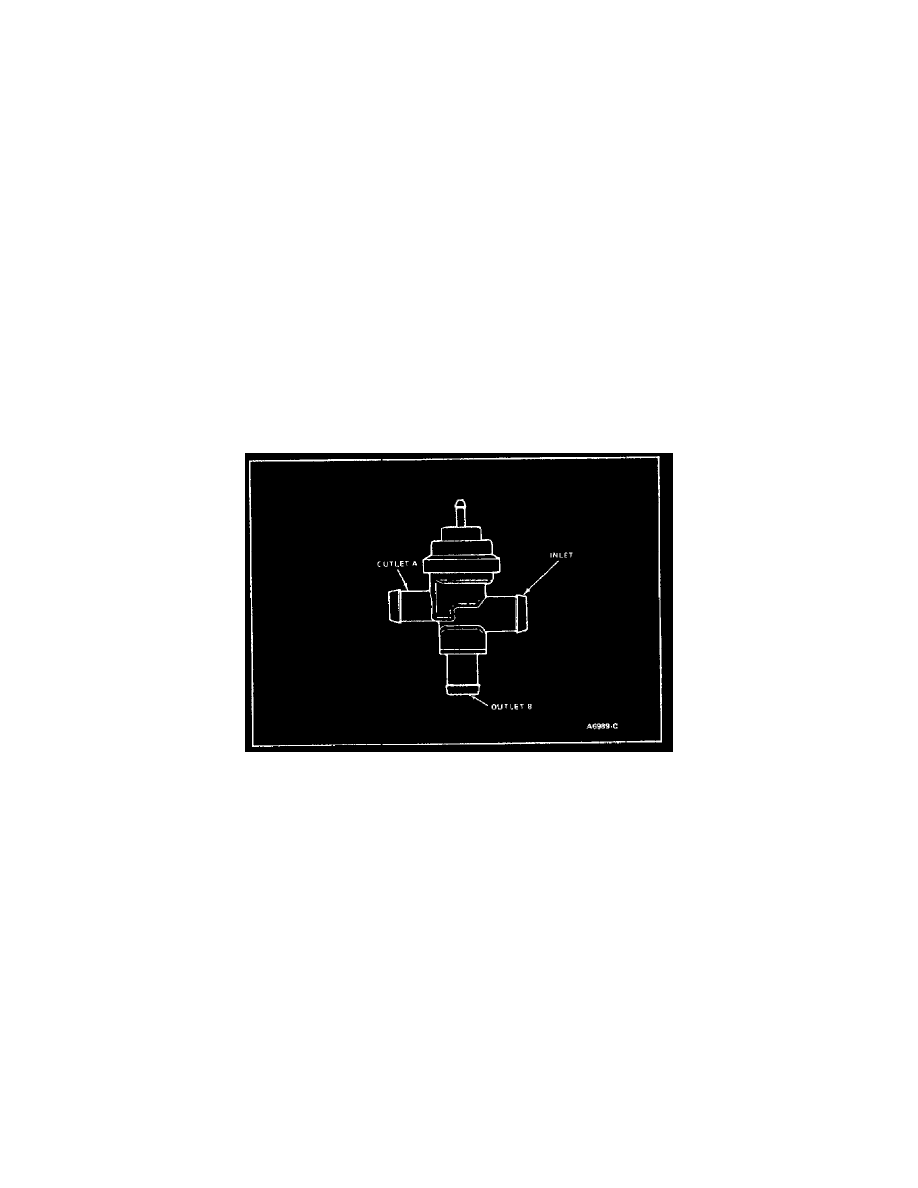F 150 4WD Pickup V8-302 5.0L (1986)

Air Injection Control Valve: Testing and Inspection
Air Control Valve
1. Verify that airflow is being supplied to the valve inlet by disconnecting the air supply hose at the inlet and verifying the presence of air flow with the
engine at 1500 rpm. Reconnect the air supply hose to the valve inlet.
2. Disconnect the air supply hoses at outlets A and B.
3. Remove the vacuum line at the vacuum nipple.
4. Accelerate the engine to 1500 rpm. Air flow should be heard and felt at outlet B with little or no air flow at outlet A.
5. With the engine at 1500 rpm, connect a direct vacuum line from any manifold vacuum fitting to the air control valve vacuum nipple. Air flow should
be heard and felt at outlet A with little or no air flow at outlet B.
6. If the valve is the bleed type less air will flow from outlet A or B, and the main discharge will change when vacuum is applied to the vacuum nipple.
7.
(a.) If the above conditions are met and a Ford Authorized Decal states that the emissions control system has been modified and timing has been set to
seven (7) degrees BTDC, then testing is complete. Restore all connections. A vacuum retard delay valve that was installed as part of the modification can
produce an engine Running Code 45 under normal operating conditions.
(b.) If the above conditions are not met, replace the air control valve and restore all connections.
